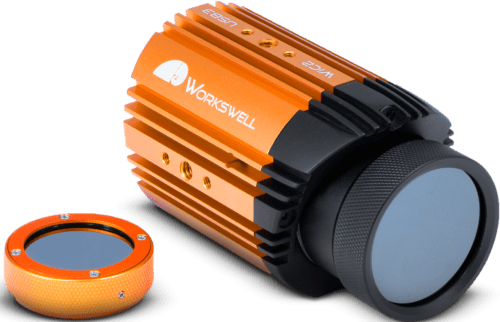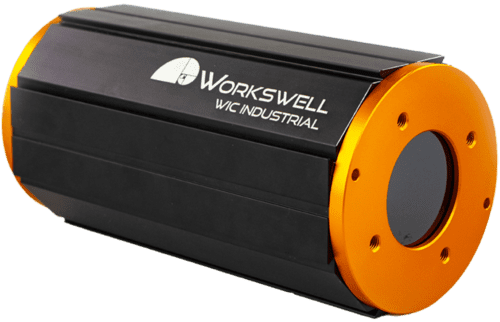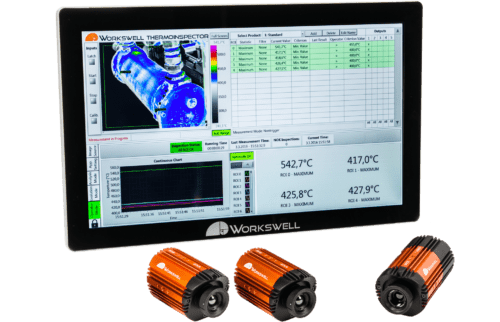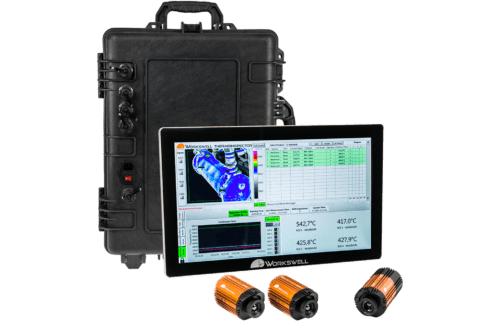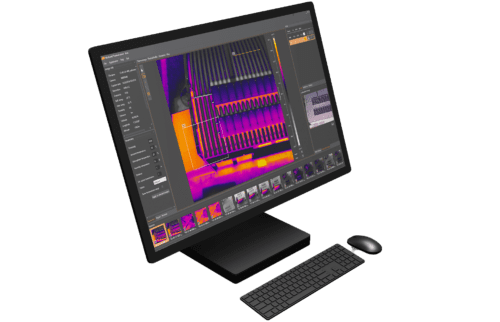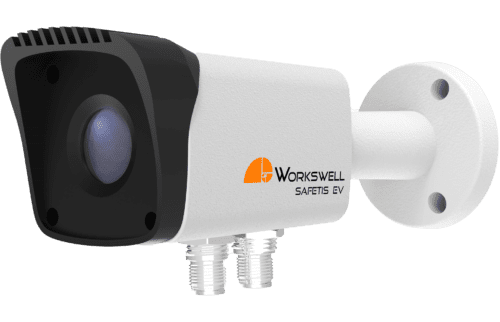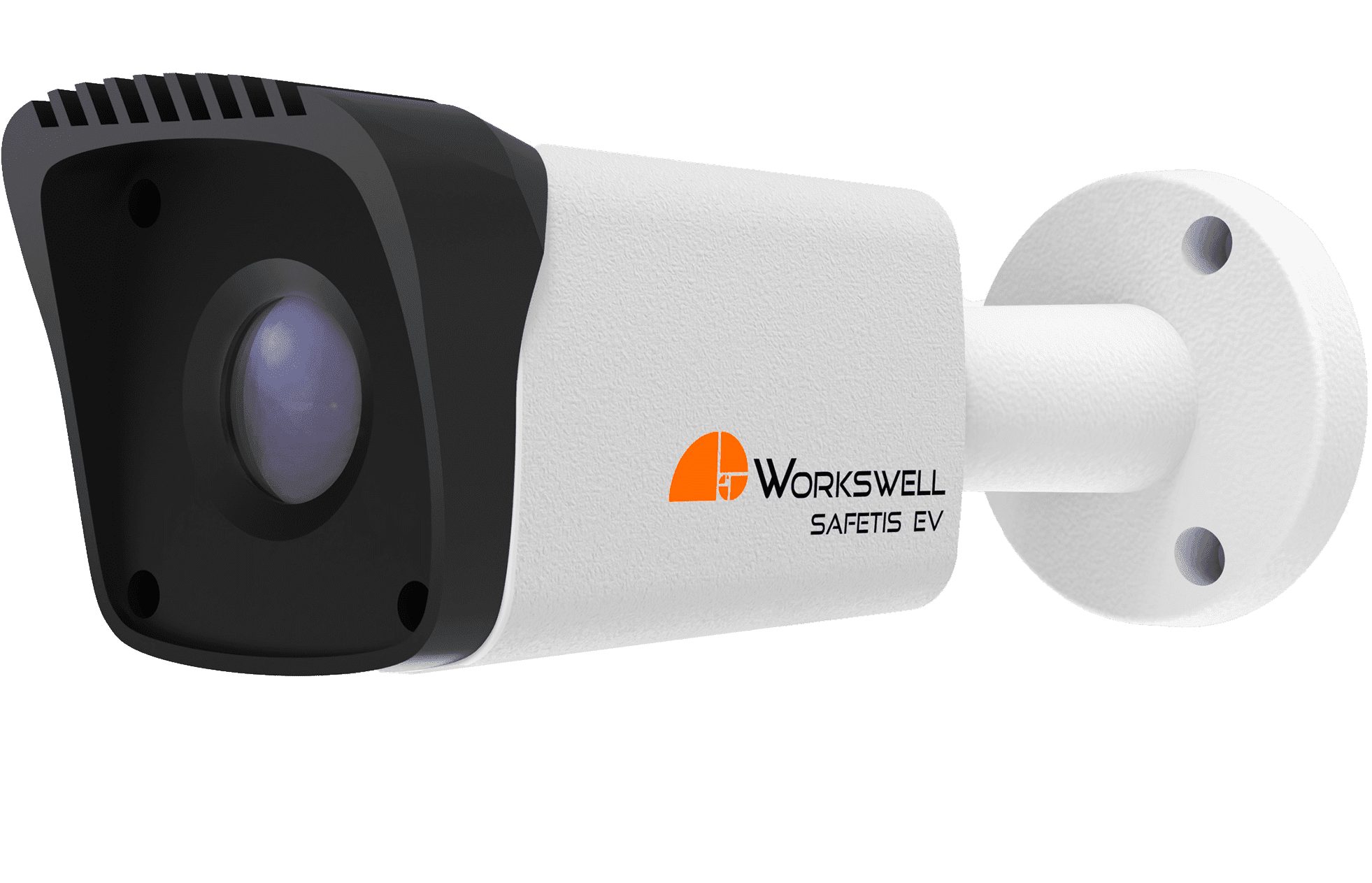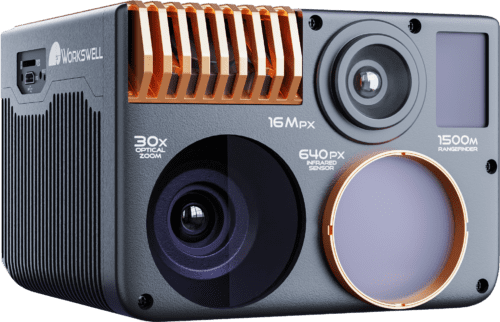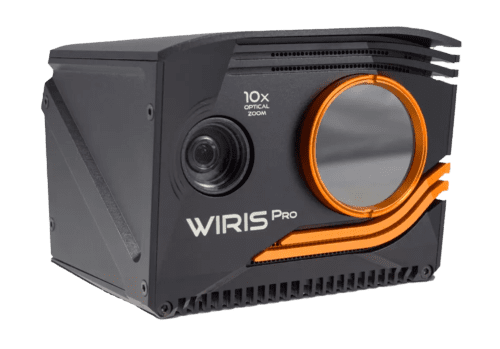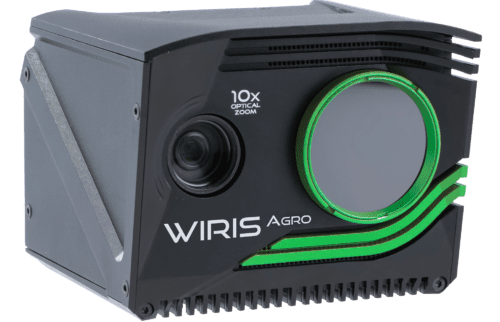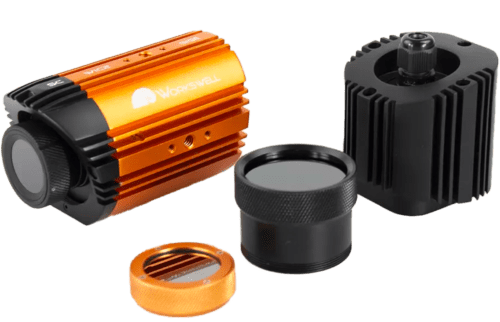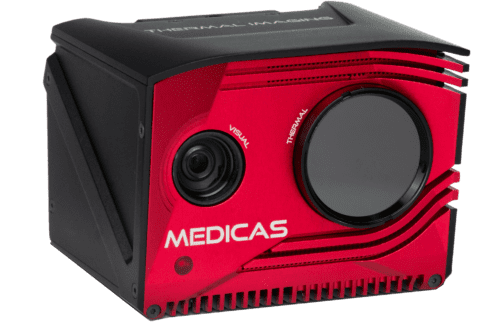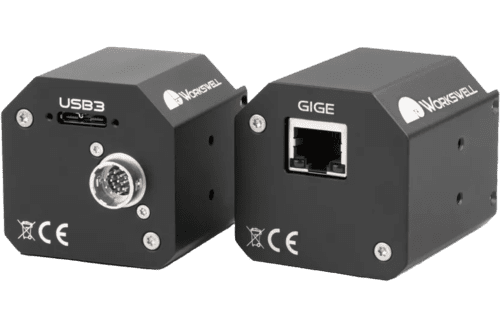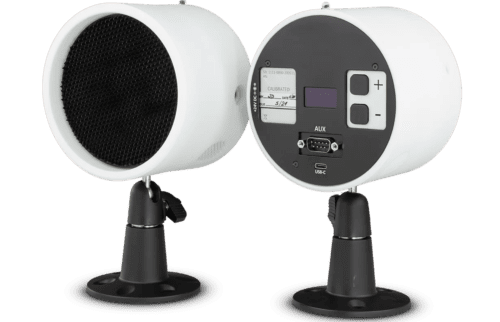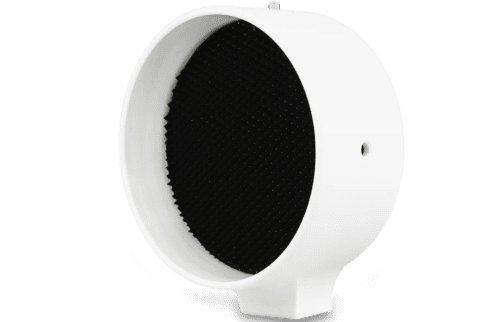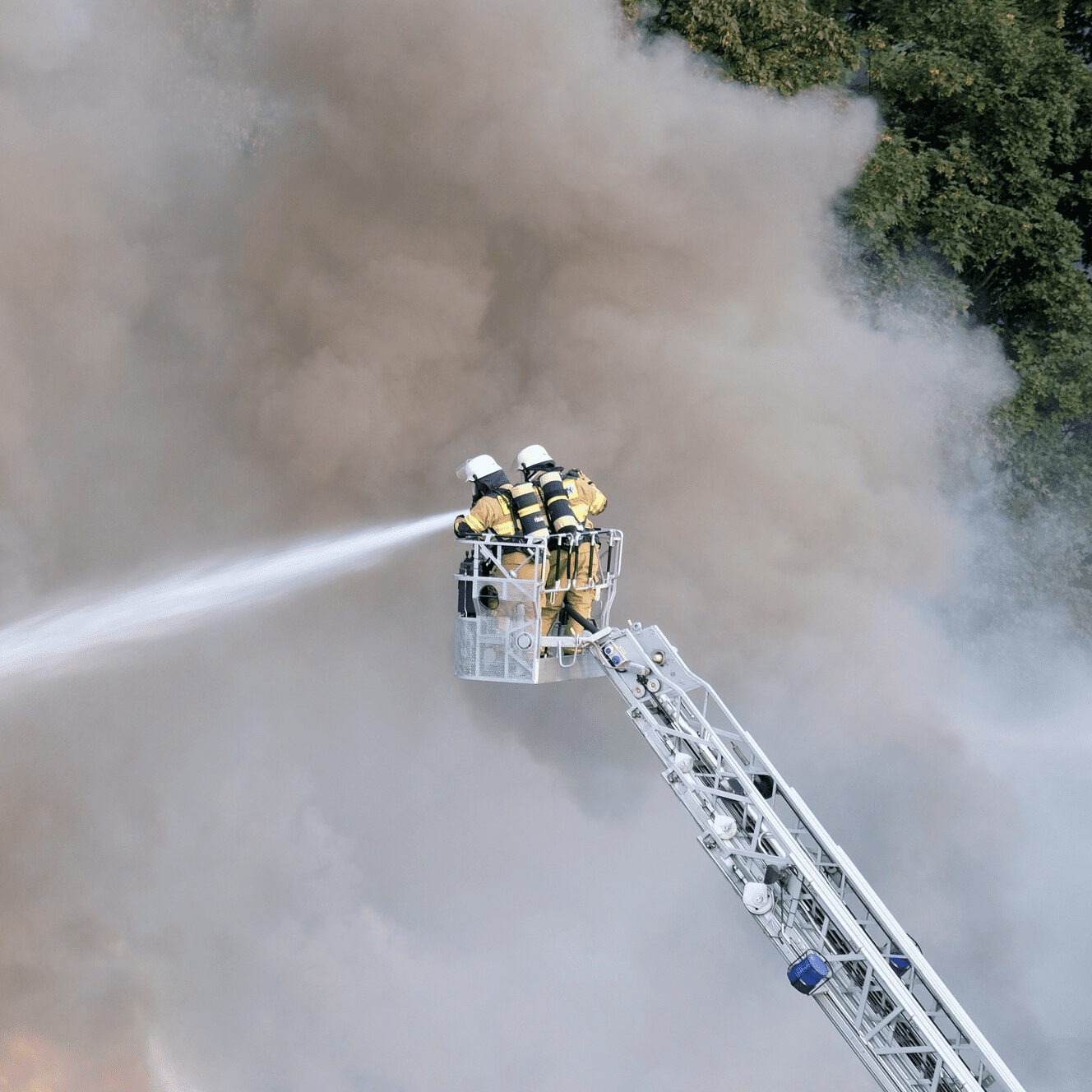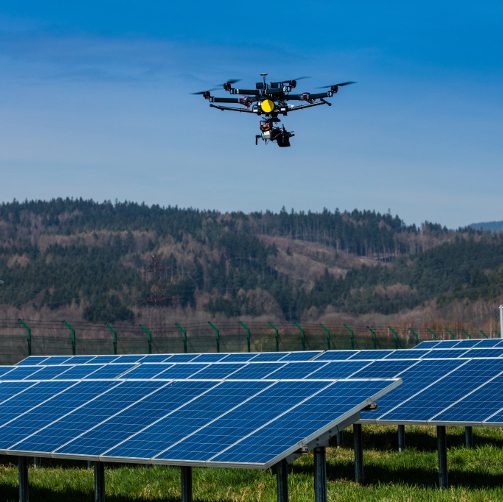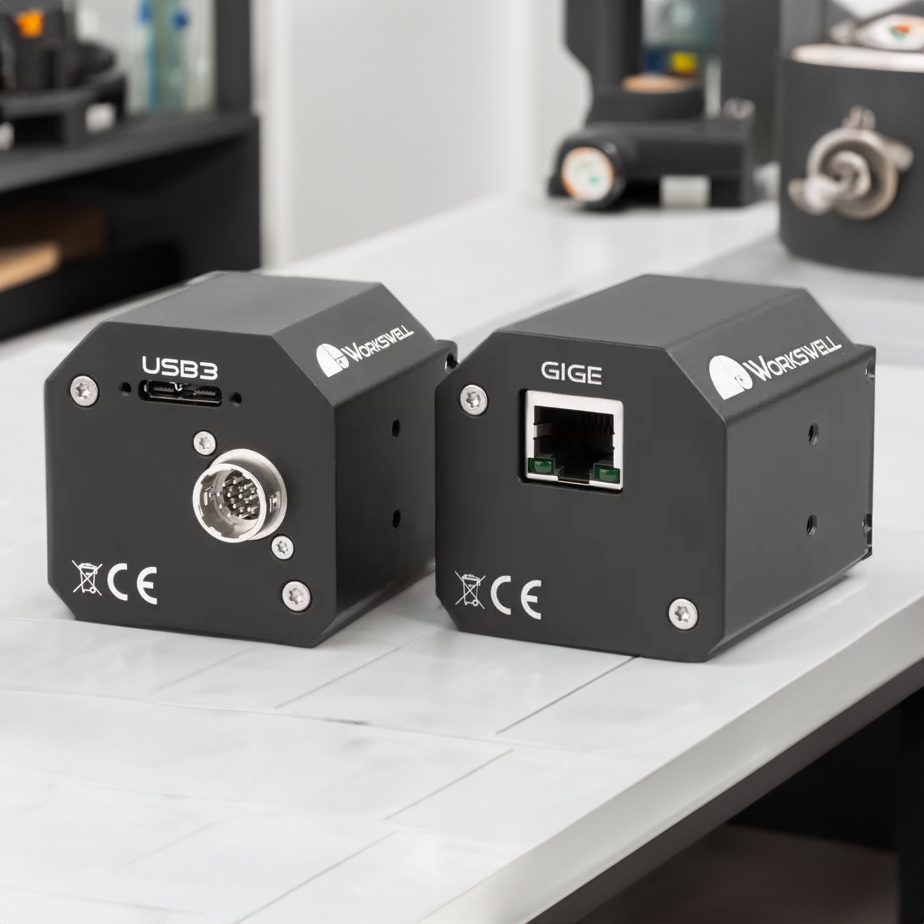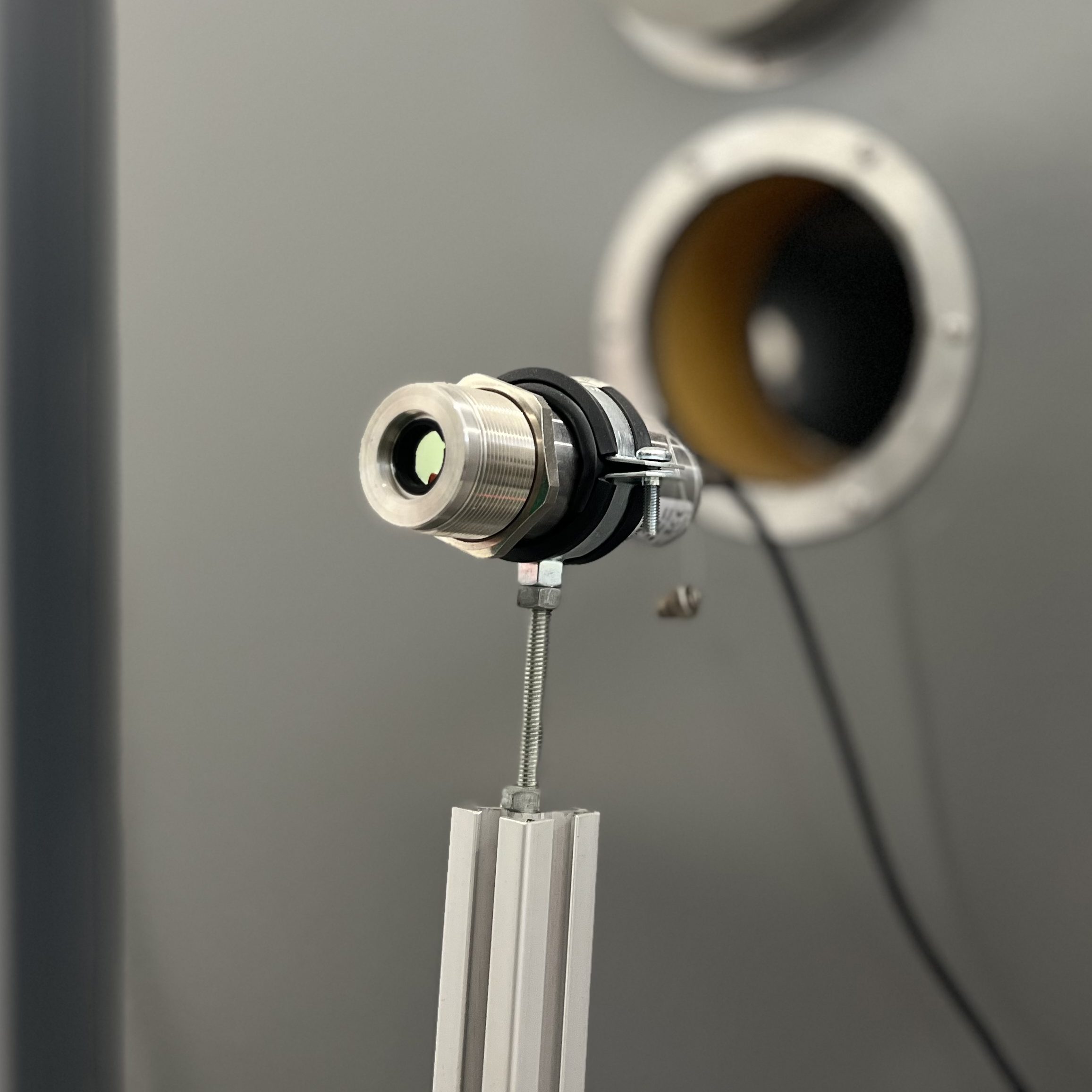Table of contents
- Active thermography and non-destructive testing
- What is a Black Body?
- Coronavirus COVID-19
- Fire detection camera as a great tool to prevent fire in early stage
- Focal Plane Array (FPA)
- Infrared pyrometer
- Night vision drone as a tool for all weather and time applications
- Non-contact gas leak detection by thermal camera
- Non-contact temperature measurement
- Non-contact temperature sensor
- Optical resolution
- Small thermal camera offers big opportunities
- Spectral range
- Spot size calculator
- Thermal detector
- What does NETD mean?
Active thermography and non-destructive testing
Active thermography is a technique for non-destructive examination and evaluation of a sample (object) and its observing by a thermal camera. Active thermography requires an external energy source to induce a temperature difference between defective and undamaged areas in the sample being tested. A wide range of energy sources are used when non-destructive testing is being processed, however the most common type is optical, followed by mechanical or inductive.
When optical excitation is used, the defects are stimulated externally (non-destructive testing), which means that energy is supplied to the surface of the sample, where light is converted into heat. Heat waves are propagated by conduction from the surface through the sample and can be detected by a thermal camera, for example using the Worskwell Active ThermoInspector system. Therefore, it is called an “active” thermography.
The procedure of a non-destructive testing of the material using an active thermography with optical energy source is as follows: The light from the lamp flashes to thermally excite the material under inspection. Then, the thermal reaction of the investigated material is recorded by the camera. The resulting thermal camera image is first displayed within an infra-red spectrum, then processed and analysed by the computer program, which detects and analyses any defects.
Optical excitation devices can use photographic flashes (for pulsed thermal stimulation), infrared lamp radiation (for step heating) or halogen bulbs (for periodic heating), and more.
The Workswell Active ThermoInspector system is specialized for such an application, but can be used non only for active thermography, but also for various passive thermography applications such as machine vision, process control, automation, metrology, pyrometric functions, temp. measurement.
What is a Black Body?
A black body (for instance black body Workswell BB200) is an ideal substance that perfectly absorbs all radiation incident on its surface, at all wavelengths and in all directions. As a result, it absorbs light perfectly. Every black body has three important characteristics:
(a) It is a surface that emits radiation perfectly at a given temperature and wavelength.
(b) The radiation of the black body does not depend on direction, that is to say, its radiation is diffuse.
c) The total radiation of the black body in a vacuum depends only on temperature. Since the black body is a perfect absorber and emitter, it can be used as a reference to compare to the radiation properties of real surfaces.
There is no material in nature that has the characteristics of a black body. In practice, however, it is possible to create a model of a black body using a light-impermeable cavity with an opening whose area is much smaller than the surface area of the cavity’s inner surface.
Since an absolute black body perfectly absorbs the light of all wavelengths, any light that leaves its surface must have been emitted by the body. The distribution of the wavelengths emitted by a heated black body at a given temperature is given by Planck’s radiation law.
For example, at 2,000 K, the body glows orange, at 4,800 K, it glows bright yellow, and at 6,500 K, the color emitted by the black body is white (Planck’s law describes the radiation of light in the visible spectrum at high temperatures, as in the case of the Sun). At higher temperatures, the light remains bluish because much of the radiation is of such short wavelengths that it reaches the ultraviolet region and is not visible to the human eye.
All light-emitting sources can be described in an analogous manner. The spectral curve of the source can be measured and labelled, for example, as 2,800 K (75W bulb) or 6,500 K (daylight).
Sources:
https://dspace.cvut.cz/bitstream/handle/10467/65692/F2-BP-2016-Allakhverdiev-Ruslan-BP%20final.pdf?sequence=-1&isAllowed=y
https://dspace5.zcu.cz/bitstream/11025/22108/1/Kohout.pdf
https://www.sciencedirect.com/science/article/pii/B9781845699963500058
Coronavirus COVID-19
What is it?
„Coronavirus” is a general term which denotes any virus of the Coronaviridae family. Viruses from this family cause diseases in people as well as in animals. They usually manifest common symptoms such as the cold, cough, breathing difficulties, and increased body temperature; however in some, significantly less common cases, they can also cause serious illness (such as the familiar SARS or MERS viruses).
A novel type of coronavirus first appeared in the Chinese province of Hubei in early December of 2019. It was labelled COVID-19 by the World Health Organization, but it is often called SARS-CoV-2. Typical symptoms of this disease include high fever, a dry cough (i.e. no cold) causing shortness of breath, and possibly, joint and muscle pain. In other words, its symptoms may be similar to the well-known flu.
How Does COVID-19 spread?
All coronaviruses are transmitted from person to person after close contact (less than 1.5m), mainly via airborne droplet transmission. In most cases, it affects the mucous membranes of the upper and lower respiratory tract.
The World Health Organization estimates the incubation period for this disease to be 2 to 14 days. During this incubation period, the infected person does not experience any health problems, however, he or she is contagious and can spread the virus.
What are the best protective measures for this disease?
When it comes to COVID-19, preventive measures are the same as with other viral diseases, such as the flu. That means that proper hygiene, especially frequent and thorough hand washing, is crucial. Doctors also recommend activities and foods that strengthen the immune system. It is also best to avoid large numbers of people, and to stay away from anyone experiencing respiratory (breathing) difficulties. Experts note that an FFP3-class respirator protects against contagion. However, within the Czech Republic, these medical-grade items are only available to healthcare professionals at this time.
Can thermal imaging be utilized for this disease?
The rapid, contact-less detection of increased body temperature, which can be one of the basic symptoms of this disease. Indeed, the thermal symmetry of the human body provides good reason for temperature measurement via thermal camera according to correct procedure. After all, a slightly increased temperature may be the initial symptom of COVID-19 or other illnesses (the thermal camera cannot recognize nor identify the kind of illness, it can measure the human surface temperature when the correct procedure is followed).
Sources:
http://www.mzcr.cz/dokumenty/koronavirus-2019-ncov-informace-pro-obcany_18432_4122_1.html
https://link.springer.com/article/10.1007/s00784-020-03248-x
Fire detection camera as a great tool to prevent fire in early stage
Fire prevention is an important part of security system. Using an infrared fire detection camera can be a great way of preventing fire by detecting hot spots before they ignite. The important feature of fire detection cameras is their possibility to observe observed 24/7 and that they can automatically activate visual or audio alarm. Using all their advantageous features, fire detection cameras can save great costs for security and especially for possible destruction of property by fire.
In gradual heating phase, flames and even smoke have not started yet. There is only the risk of gradual warming. Even though the smoke detectors do not respond, the fire detection camera Workswell SAFETIS records small changes in warming and can respond in time.
Fire detection cameras are usually constructed for the fast detection of the risk of flare-up. That is the main difference from the conventional smoke detectors, which can give late warning and erroneous evaluations are not the rare ones for them.
Workswell company offers a great variety of fire detection cameras for wide range of application.
Focal Plane Array (FPA)
Focal Plane Array (FPA), sometimes called staring array or staring-plane array, is an image sensing device. It is special type of bolometer thermal detector.
Focal plane array consists of a series of small thin-film bolometers arranged in a matrix in the focal plane of the detector. FPA is basically a planar pixel sensor.
Focal plane array is currently the most common type of thermal detector in thermal cameras for various applications. Typical detector sizes today vary from 160×120, 320×240 to 640×480 pixels and possible pixel sizes are of 25×25 µm, 17×17 µm or even 12×12 µm.
Focal plane array is currently very efficient thermal detector that allows reduce the overall cost of thermal cameras.
Infrared pyrometer
Infrared pyrometer, sometimes called infrared thermometer, is a device for non-contact surface temperature measurement.
Infrared pyrometer measures the temperature at a spot on a surface. To determine the spot size, spot size calculator can be used. Infrared pyrometer detects the electromagnetic radiation in infrared part of electromagnetic spectrum and based on that it can measure temperature. Infrared pyrometer consists of a lens that focus the infrared thermal radiation, proportional to the object temperature, on to a detector, which converts the detected radiation to an electrical signal that can be displayed in units of temperature after specific mathematical transformation.
The biggest advantage of infrared pyrometry, compared to conventional temperature measurement such as thermocouple etc., is that it permits temperature measurement of surfaces from a distance, contactless. This means that infrared pyrometry is possible to use even in dangerous, and for example, bad weather condition.
There exist more types of infrared pyrometers, such as broadband pyrometer, partial radiation pyrometer or ratio pyrometer.
Night vision drone as a tool for all weather and time applications
Drone offers us a possibility to observe any object around from “bird perspective”, which is great. But there are many applications that require night vision which is possible using an infrared camera, so what about combining these two approaches together? Yes, there is a possibility to use night vision drone under any weather conditions but also any time of the day, even at night.
Most common applications requiring using of nigh vision drone would be especially security and rescue.
Safety is simply a priority in most industries but also in life. Yet despite our best efforts, security is never a settled matter, for new risks constantly arise. Even the most alert guard can do little when faced with the darkness of a moonless night. And that is why it can be so convenient to use a tool that can help us to see through any darkness or fog. This tool can be night vison drone combined with the thermal camera Worskwell Wiris Security. A thermal camera is essential for night vision, otherwise, drone can be combined with classical digital camera but will not be able to provide any data during the night-time.
All objects warmer than absolute zero emit infra-red radiation that can be detected by thermal imaging systems. Since living creatures almost always have different body temperatures than their surroundings, night vision drone is a practical way to safely guard buildings as well as search for any missing people at night and in bad weather, including rain, snow, and fog.
Night vision drone can be also used to detect people crossing land borders. Further, thermal camera Worskwell Wiris Security can also help users find someone in a burning building who cannot be seen due to smoke, or someone who is drowning but can’t be seen because it’s too dark.
Combining drone with thermal camera, that can detect objects under any conditions, night vison drone can help us in many applications and save lives as well as property.
Non-contact gas leak detection by thermal camera
Any gas leak, especially the major one, can lead at least to a problem or worse, to a catastrophe. Further, constant gas leak in industry contribute to global warming. It is essential problem for many companies that must detected somehow. There are more types of gas detection system and not all of them are suitable for majority of applications.
Gas leak detection camera, such as thermal camera Worskwell GIS-320, can detect many major gases, moreover can be used with drone. Under certain circumstances, infra-red cameras are highly suitable for detecting specific gases leakages and the presence of gas in the air.
Gas leak detection by a thermal camera is an innovative approach that uses highly sensitive specialized sensor that hosts a cooled optical band gate filter. Gas leak detection camera can detecteven very small fugitive emissions of industrial gases and enables very quick and effective detection and visualisation of gas leaks at the same time.This allows to every user of gas leak detection camera to prevent major damages and avoid fines.
As quick, non-contact measuring instrument is gas leak detection camera a great tool which can be used in difficult-to-access places can detect small leaks from several meters away, as well as larger leaks at hundreds of meters of distance. It can also detect leaks on moving vehicles.
As typical applications for gas leak detection camera there may be named followed: Flanges, Valve stems, Plugs and Caps, Machinery, Couplings, Pump seals, Holes, Passing valves, Drain covers, Instrument Connections.
The following gases can be detected with this method: Benzene, Ethanol, Ethylbenzene, Heptane, Hexane, Isoprene, Methanol, MEK, MIBK, Octane, Pentane, 1-Pentane, Toluene, Xylene, Butane, Ethane, Methane, Propane, Ethylene and others.
Non-contact temperature measurement
Measuring a temperature is a very common and typical process in industry and can be done in several ways. One of best method to measure a surface temperature safely is the use of non-contact temperature measurement by thermal cameras.
The best advantage of non-contact temperature measurement is, obviously, that it enables the surface temperature to be measured without physical contact with the measured object.
The principle of non-contact temperature measurement through thermal camera is based on the optical detection of infrared radiation, which is emitted by every object on the Earth. The detection is produced through lens which captures the focused infrared radiation onto the detector which translates this radiation onto the electrical signal. The final thermogram – image of captured infrared radiation – is calculated using advanced signal processing and mathematical transformation.
Non-contact temperature sensor
When measuring temperature using a contactless device, such as thermal camera or thermometer, this device must contain a temperature sensor, as a crucial element. Detectors are part of usable sensor systems. Sensor systems include optics, detectors, and image electronics. A sensor designation is therefore a more complex than a detector designation.
As a non-contact temperature sensor, it must react to infrared electromagnetic waves (radiation). There exist two main types of such sensors: thermal and quantum.
Thermal sensor is based on temperature change of the measured object through the absorption of electromagnetic radiation (temperature elevation or depression). The change in temperature causes a change in a temperature-dependent property of the thermal detector, which is evaluated electrically and is a measure of the absorbed energy.
Quantum sensor is much more complex and usually much more expensive component of non-contact temperature measurement device (e.g. thermal camera). These non-contact temperature sensors do not work on the principle of converting radiation into heat but provide an electrical signal (change in voltage or electrical conductivity) directly after the absorption of infrared radiation. They work on the principle of the internal photoelectric effect. When photons are absorbed by a detector over a range of wavelengths, they generate free pairs of electrons that can be detected as an electric current. The signal output of the quantum detector would be very small at room temperature because it would be obscured by the detector’s own noise. For this reason, quantum detectors are always cooled.
Optical resolution
Optical resolution is a unit, that needs to be defined as the ability of an imaging system to differentiate between details in the image, that is being displayed.
More specifically, the optical resolution of the (infrared) measuring system is defined by the ratio of the size of the measuring spot to the distance between the detector and the measurement object.
Optical resolution of the optical system of (thermal) camera is also determined by a sensor’s size. It is important that the object which is beeing measured, is larger or at least the same size as the sensor’s field of view. The optical resolution and, consequently, the temperature resolution are the better the larger the object compared to the field of view is.
Small thermal camera offers big opportunities
Small thermal camera can be classical infrared camera, that can measure surface temperature and visualise it but with smaller dimension. Such a small thermal camera can be a great working tool for many applications that require small dimension or tiny weight of thermal camera.
One of the typical applications for small thermal camera is unmanned aerial vehicles (drones). Some drones are capable to carry a thermal camera but are limited on its load capacity which means that such drones require small thermal camera, for example Workswell WIRIS thermal camera.
Further, there are applications that require small and compact thermal camera because of lack of space in the environment that requires to be monitored. For those applications, Workswell WIC thermal camera can be ideal because of its dimension which is only 97 x 65 x 63 mm for USB3 version. In addition, this small thermal camera allows very versatile use.
Then, there exits very small thermal cameras that are compatible with mobile phones, but these cameras may not be accurate enough for professional applications due to limited size of sensor.
Spectral range
Electromagnetic spectrum is characterized by the range of wavelengths (and frequencies) and is divided into seven main parts; beginning at the low frequency (long wavelength) end of the spectrum these are: radio waves, microwaves, infrared, visible light, ultraviolet, X-rays, and gamma rays at the high-frequency (short wavelength) end. Each part of electromagnetic spectrum is characterized by its own spectral range. For example, spectral range of visible light lies in wavelength range from 380 nm to 780 nm.
Infrared radiation is the basis for non-contact surface temperature measurement as its spectral range is characterized by wavelengths longer than those of visible light (approximately from 780 nm to 1 mm). This is based on physics – the black body emits the most, according to Planck’s Law of Radiation, at relevant temperatures in the infrared spectral range between 780 nm and 14 μm wavelength. According to spectral range, appropriate detector must be used to detect such a part of electromagnetic spectrum. In the terms of thermal camera usage, spectral range of infrared radiation must be detected, and one of the most suitable detectors can be the microbolometer.
Thermal detector
Thermal detector is type of infrared detector, which can be used in thermal cameras as the key component. Another type of infrared detector is quantum detector, which is much more complex and expensive and is not used on the best-selling thermal camera models for various application.
Thermal detector is based on temperature change of the measured object through the absorption of electromagnetic radiation (temperature elevation or depression). The change in temperature causes a change in a temperature-dependent property of the thermal detector, which is evaluated electrically and is a measure of the absorbed energy.
There exist more types of thermal detectors, such as pyroelectric detector or bolometer.
Pyroelectric thermal detectors
Pyroelectricdetector is based on pyroelectricity. Even very small temperature change in the detector produces a change in surface charge as a result of the pyroelectric effect. This results into generation a voltage signal which is processed in a pre-amplifier.
Typical material for pyroelectric thermal detector is a crystal of a pyroelectric material, which has a strong temperature-dependent electric polarization.
Bolometer thermal detector
Bolometer is based on the temperature-dependent electrical resistance.
A bolometer consists of an absorptive layer, connected to a thermal reservoir (a body of constant temperature) through a thermal link. Resistance value of absorptive layer changes when heat radiation is absorbed. The change in resistance causes a change in the signal voltage drop across the bolometer resistance.
To be able to achieve hight efficiency of detector, it is necessary to use a material with a high coefficient of temperature of electrical resistance. Today, most bolometers use semiconductor or superconductor absorptive elements rather than metals.
Focal Plane Array (FPA)
When constructing thermal cameras, the most common type of thermal detector which can be used is a Focal Plane Array (FPA) based on thin-film bolometers. Typical detector sizes today vary from 160×120, 320×240 to 640×480 pixels.
What does NETD mean?
When selecting a thermal camera for a specific application, not only resolution, but also thermal sensitivity is very important. The NETD value (Noise Equivalent Temperature Difference), that is usually indicated in mK, depends on the noise of the infrared detector, and is very closely related to the thermal sensitivity.
The lower the value of NETD and noise of the detector, the higher the thermal sensitivity (temperature difference that can be detected) of a thermal camera is.
There are certain applications that require a minimum value of NETD, but usually in industry value around 100mk is acceptable.
According to the application that thermal camera is being selected for, the NETD value should be specified but the products of Workswell company meets very high standard and usually should meet your requirement.
